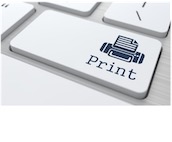Timothy George on "The Typographical Reformation"
Timothy George is a wonderful Church historian. In a recent post on the First Things website, George offers fascinating insights into the role of printing in the Reformation. Since I touched on the subject a week ago, I thought I would share this very good article with you.
It begins:
The English philosopher Francis Bacon (1561-1626) once said that the three greatest inventions during his lifetime were gunpowder, the mariner’s compass, and printing. Gunpowder forever changed the nature of armed conflict and introduced an era of savage warfare that is with us still. The compass enabled Columbus, Magellan, and other navigators to discover the New World and map it with precision. The printing press brought about an explosion of knowledge, the expansion of literacy, and a revolution in learning that touched every aspect of European civilization, not least the church.
One of the leaders of the church who recognized the importance of printing right from the start was the scholar-bishop Aeneas Silvius Piccolomini, who in 1458 became Pope Pius II. In October of 1454, Aeneas Silvius found himself at the famous Frankfurt book fair, no doubt on the hunt for special treasures for his great library. Soon after the fair, he wrote to a friend about his meeting there a “marvelous man” (vir mirabilis) who had with him a perfectly produced book, one that was exceedingly clean and correct in all of its lettering, with beautiful characters that could be read “effortlessly without glasses.” Some scholars think that the wondrous man Aeneas Silvius encountered at the fair was Johann Gutenberg and that the spotless book he saw was Gutenberg’s masterpiece, the forty-two-line Bible (so called because it had forty-two lines per page), hot off the press from his workshop at Mainz.
You can see the rest of the article here.






